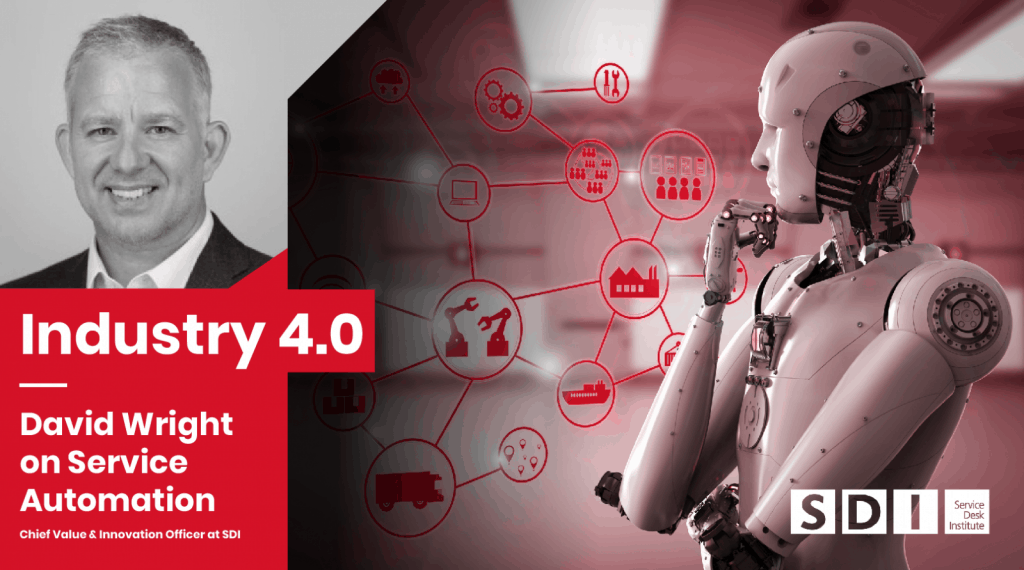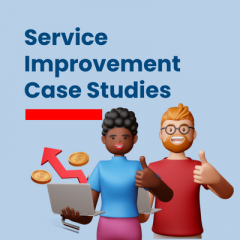
As a species, we’ve been shaping our environment and crafting ways to help make our lives easier for over 50,000 years. For over 50,000 years we’ve learned to shape or adapt how we live, to make our surroundings more effective, efficient and to work for us; so, it better supports our ever-changing needs within the context of our place in time. We’re a species of tool crafters and innovators and over the last 50,000 years, the only thing that’s held us back from where we are now, was our inability to develop the supporting technologies that have helped us exorcise our ability to innovate, and turn our thoughts into reality. With every successive generation, that inability has the catalyst for change and we’ve slowly been turning inability to ability. And funnily enough, that evolution mirrors in microcosm, how technology and service management has evolved and how IT professionals have learned to shape or adapt how IT works, to help make our business surroundings more effective, efficient and to work for us; so, it better supports the businesses and customers ever-changing needs within the context of their place in time.
The last 200 years has been an exponential roller-coaster of technology change for our species, we’ve been co-existing with the spectre of automation ever since the last industrial revolution. Slowly making our way to where we are now, a place in time and space where we are connected to automaton, almost at a molecular level. Some may argue that we are inherently a lazy species, as we’ve always looked to create quicker and easier ways of doing things, the ability to automate is actually part of our DNA.
Developing technology at the speed that business requires
Since the last industrial revolution, and more than ever before that time, humans have become gap fillers. Filling the gaps between inputs and outputs, filling the gap between process and technology. In this part of the 21st century, the modern enterprise uses a combination of people and technology to fulfil processes to support a business and its customers. More than ever before, the technology that we use in business may not be able to be adapted or developed at the speed that the business requires. So, we use humans to fill the gap between technology and process. It many cases that works well as humans can add value to a process like interacting with customers, making nonlinear decisions to compliment a process or contextualize information quickly.
But in many cases in a service environment, humans are simply filling gaps, just applying business rules and performing repetitive activities, in order to fulfil a process. That also impacts the way we support technology in the modern enterprise, where, humans rely on skills, experience, training, central processes, knowledge management, frameworks, best practice, continual service improvement and IT service management tools to help deliver service. It could be argued that IT support has always been a reactive proposition, if something isn’t working, ring the service desk and we’ll fix it, and with the complexities of legacy estates, multiple systems, inefficient workflows, process changes, low value repetitive work like password resets; or repetitive tasks like copy and pasting information, along with asking users to repeat information and having to physically document an interaction. All that human intervention, can lead to human error, longer resolution times, lack of service consistency and a poor customer experience.
Service Automation: working in new ways
Although that model has been sustainable in the past, the approach is slowly becoming antiquated and out of date, and soon may no longer meet the needs of life in the 21st century. Service automation, machine learning, predictive prevention and assisted self-service, will soon enable IT teams to work in new ways, utilising new skills development techniques and digital lifelong learning frameworks to enable their people and teams to constantly adapt to the ever-changing needs of an organization, and the needs of its customers, as the rules change forever.
The push to ‘do more with less’, the call from governments for increased productivity, and the relentless focus on staying competitive, are converging with exponential changes in technology, new capabilities, new solutions and services, to forge hybrid, augmented and orchestrated service propositions that are catapulting us into the 4th industrial revolution. Productivity as a service, is more real than it’s ever been and the power of technology’s ability to enable, is again at work; and potentially, that enabling impact is more powerful and far reaching than it’s ever been. In fact, more powerful than the impact of the wheel and how it enabled our species to do more, be more agile and work smarter. Through service automation, machine learning and artificial intelligence, the door to the near future is no longer ajar, it’s very much open. Through automation, organisations are able to release themselves from the shackles of antiquated methodologies and frameworks to innovate rather than just concern themselves with trying to do the same stuff better.
The premise of service automation offers our species many benefits including precision, accuracy, reduced human error, quicker decision making, improved service consistency, improved quality, improved resolution times, the removal of low value laborious work, improved scalability, agility and operational efficiency, process compliance and adherence; as well as the opportunity for humans to learn new skills and engage in higher value business activity, and ultimately, deliver a higher level of customer experience. However, for every action there is an equal and opposite reaction that could see automation displace low skilled jobs, encourage people to question the ethical use of such technology, raise political and social considerations, promote the over reliance on machines and lack of control around decision making; alongside the perennial security and system exploitation opportunities such technology could provide the less scrupulous.
Endless opportunities
So much to consider, however, the potential opportunities service automation could bring us for the betterment of our species, are incalculable. Very soon, simply getting better at the same stuff in a working environment won’t be good enough anymore. Dismantling the old-world systems to focus on innovation over incremental improvement, may become a preferred approach for many organisations.
Like it or not, service automation is happening as we speak, both in the home and at work, turning technology capabilities and solutions into ‘life as a service’ services. However, we won’t understand the full ramifications of such new services, and the new approaches to developing and delivering automated services, until we’ve become fully service automated; in the same way the inventor of the combustion engine could never foresee the long-term impact of the combustion process on the planet. And as we plummet towards the 4th industrial revolution, and now the official the age man, we again get to shape what our species will become.
The use of new approaches to automate services like artificial Intelligence for IT Operations or ‘AIOps’ is fast taking centre stage in the battle of what the future of IT support could look like. AIOps refers to multi-layered technology platforms that automate and enhance IT operations by using analytics and machine learning to analyse data, collected from multiple resources across the enterprise, in order to automatically spot and react to issues in real time. This has the potential to move support models, based on last century thinking, through the stages of existing, to effective, to proactive, to predictive service operations. Service Desk Institute continues to see some clear examples of organisations developing and introducing strategies to harness such new capabilities in the form of service bots, robotic process automation, virtual assistants and event driven automation frameworks, all of which support the creation of proactive, and predictive operations.
New support channels are being developed to compliment the traditional support channels like voice, email channels and self-service. The use of intelligent conversational user interfaces and the reduced need for human intervention is providing consumers of IT services with a more effective way to brokering personalised solutions. As a result, the traditional approach to service support in IT service operations, will augment. Proactive service orchestration will become the norm rather than reacting to failure. The support focus is moving to innovating and automating rather than firefighting; freeing up people to undertake more business value orientated workloads. The focus will shift to up-skilling and training software, as well as the consumers of IT services, rather than break fix. This shift will require new soft skills and harder skills. Digital lifelong learning strategies will evolve to meet the continual change and demands that service automation, data literacy, digital fluency, machine learning, artificial intelligence and service orchestration brings an organisation.
So, what have we learned? Well, you could argue that our species invented the wheel because we are inherently a lazy species. However, we’re still the same species that we were way back in the Palaeolithic, so work smarter not harder or, be smarter and get lazy, dismantle the old world and innovate!


























